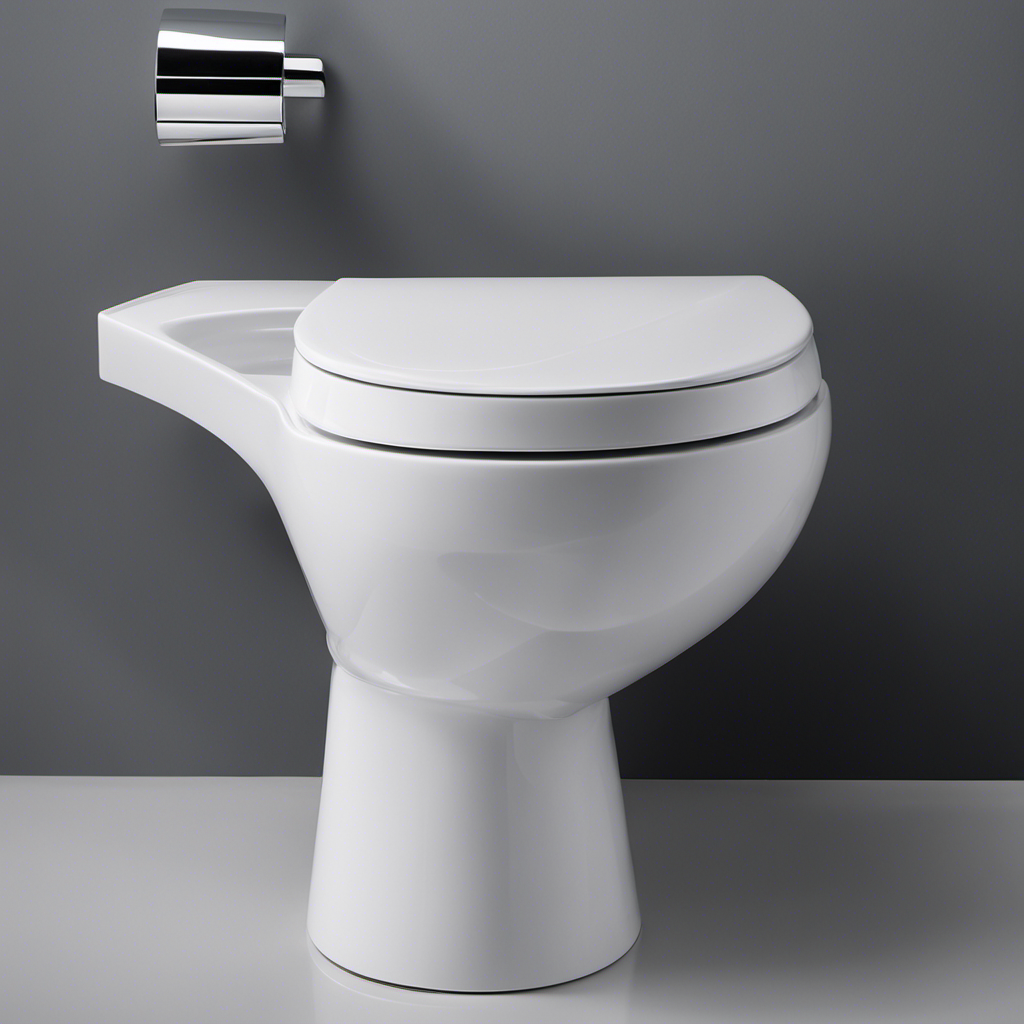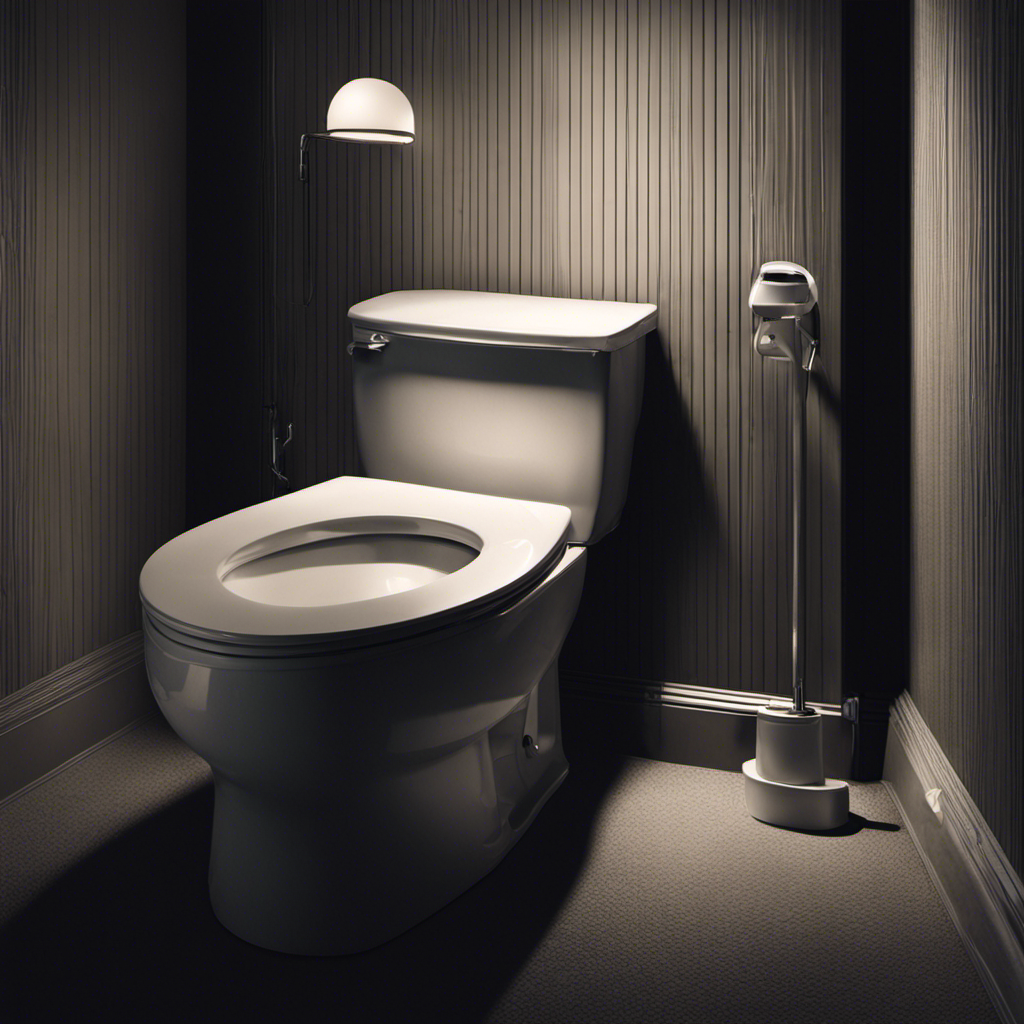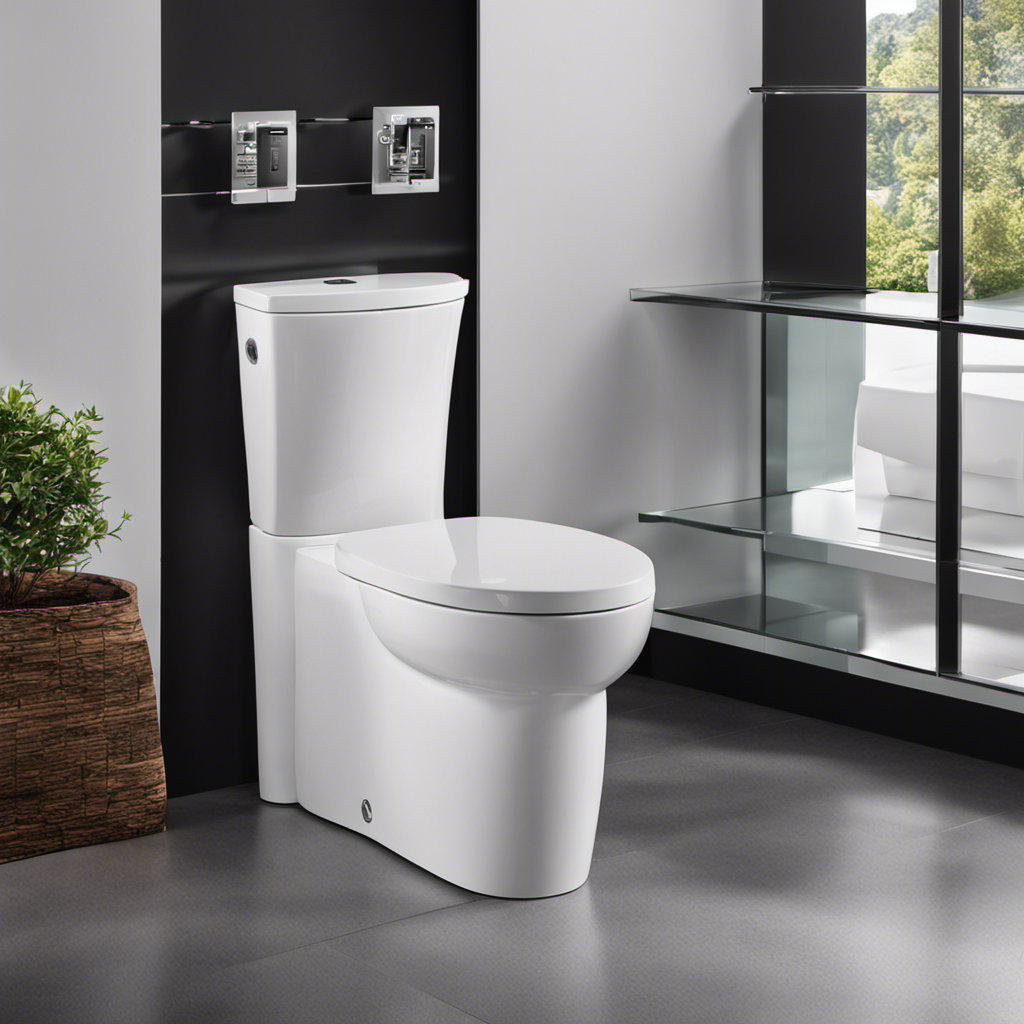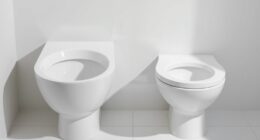Hey there!
Ever found yourself in a situation where the water supply is unexpectedly cut off, but you still need to flush the toilet? Don’t worry, I’ve got you covered.
In this article, I’ll guide you through some practical and efficient methods to flush your toilet when the water is off. From using a bucket to utilizing gravity-based techniques, I’ll provide you with emergency measures that will save the day.
So, let’s dive in and learn how to tackle this inconvenient situation head-on!
Key Takeaways
- Flushing toilets rely on water pressure to function properly.
- Alternative flushing methods include pouring water directly into the toilet bowl, using composting toilets, installing vacuum-assisted toilet systems, and utilizing greywater systems.
- Using a bucket to flush the toilet can be an effective alternative when water is off.
- Gravity-based flushing techniques are a cost-effective and environmentally friendly option that relies on the force of gravity to move waste down the drain.
Understanding the Water Supply System
To understand why you can’t flush the toilet when the water is off, you need to know how the water supply system works.
The water supply system relies on water pressure to deliver water to our homes. When the water is on, the pressure pushes the water through the pipes and into our toilets.
However, when the water supply is shut off, there is no pressure to move the water. Without water pressure, the flushing mechanism in the toilet cannot function properly.
The flush relies on the force of the water to create a siphon effect, which removes waste from the bowl. Without water pressure, this siphoning action cannot occur, and the toilet cannot flush.
Exploring Alternative Flushing Methods
You can try using a bucket of water to help with the flushing when the water is not available.
While waterless toilet options are becoming more popular, there are still situations where water may be temporarily unavailable. In these cases, it’s important to have eco-friendly flushing solutions to minimize water wastage.
Here are four alternatives to traditional flushing methods:
-
Pouring a bucket of water directly into the toilet bowl can create enough force to flush the waste away.
-
Using a composting toilet that separates urine and solid waste can eliminate the need for water altogether.
-
Installing a vacuum-assisted toilet system can reduce water usage by using air pressure to flush waste.
-
Utilizing a greywater system, which collects and filters water from other sources like sinks and showers, can be used for flushing toilets.
Using a Bucket to Flush the Toilet
When water is temporarily unavailable, grab a bucket and pour it directly into the toilet bowl to create enough force for waste removal. In emergency situations where water conservation is crucial, this method can be a lifesaver.
To start, find a sturdy bucket that can hold at least a gallon of water. Fill the bucket with water from an alternative source, such as rainwater or previously collected emergency water. Carefully pour the water into the toilet bowl, aiming for the center to create enough force to flush the waste away.
Repeat the process as needed until the toilet is adequately flushed. Remember to conserve water by using only the necessary amount and avoiding any unnecessary flushing.
Utilizing Gravity-Based Flushing Techniques
If water is unavailable, grab a bucket and pour it into the toilet bowl to utilize gravity for waste removal. Gravity-based flushing techniques can be an effective solution when facing water shortages or plumbing issues.
Here are four advantages of DIY gravity-based flushing:
-
Efficiency: By using gravity, the force created helps to move the waste down the drain, eliminating the need for excessive water usage.
-
Cost-effective: Gravity-based flushing requires minimal equipment, making it a budget-friendly option compared to traditional flushing methods.
-
Environmentally friendly: With reduced water consumption, gravity-based flushing helps conserve water resources and reduces the environmental impact.
-
Reliability: Gravity-based flushing techniques rely on the natural force of gravity, making them less prone to failure and requiring less maintenance.
Emergency Measures for Flushing Without Water
In an emergency situation without water, it’s important to consider alternative methods for waste disposal. When faced with this challenge, portable flushing devices can be a lifesaver. These devices are designed to conserve water while still providing an effective flushing mechanism. By utilizing gravity and a minimal amount of water, these devices can flush waste away without the need for a traditional water supply. Additionally, water conservation techniques can be employed to further mitigate the lack of water. This can include using greywater from other sources, such as rainwater or stored water, for flushing purposes. By implementing these emergency measures, waste disposal can still be managed effectively even in the absence of running water.
| Portable Flushing Devices | Water Conservation Techniques |
|---|---|
| Gravity-based flushing system | Utilize greywater sources |
| Minimal water requirement | Rainwater harvesting |
| Effective waste disposal | Stored water utilization |
Conclusion
In conclusion, when faced with the challenge of flushing a toilet without water, it is important to understand the workings of the water supply system and explore alternative flushing methods.
By using a bucket or gravity-based techniques, you can ensure proper sanitation even when the water is off.
Remember, in times of emergency, it’s crucial to be resourceful and adaptable.
So, the next time you find yourself in a situation where water is unavailable, don’t panic! Just remember these handy tricks and you’ll be able to flush with ease.










